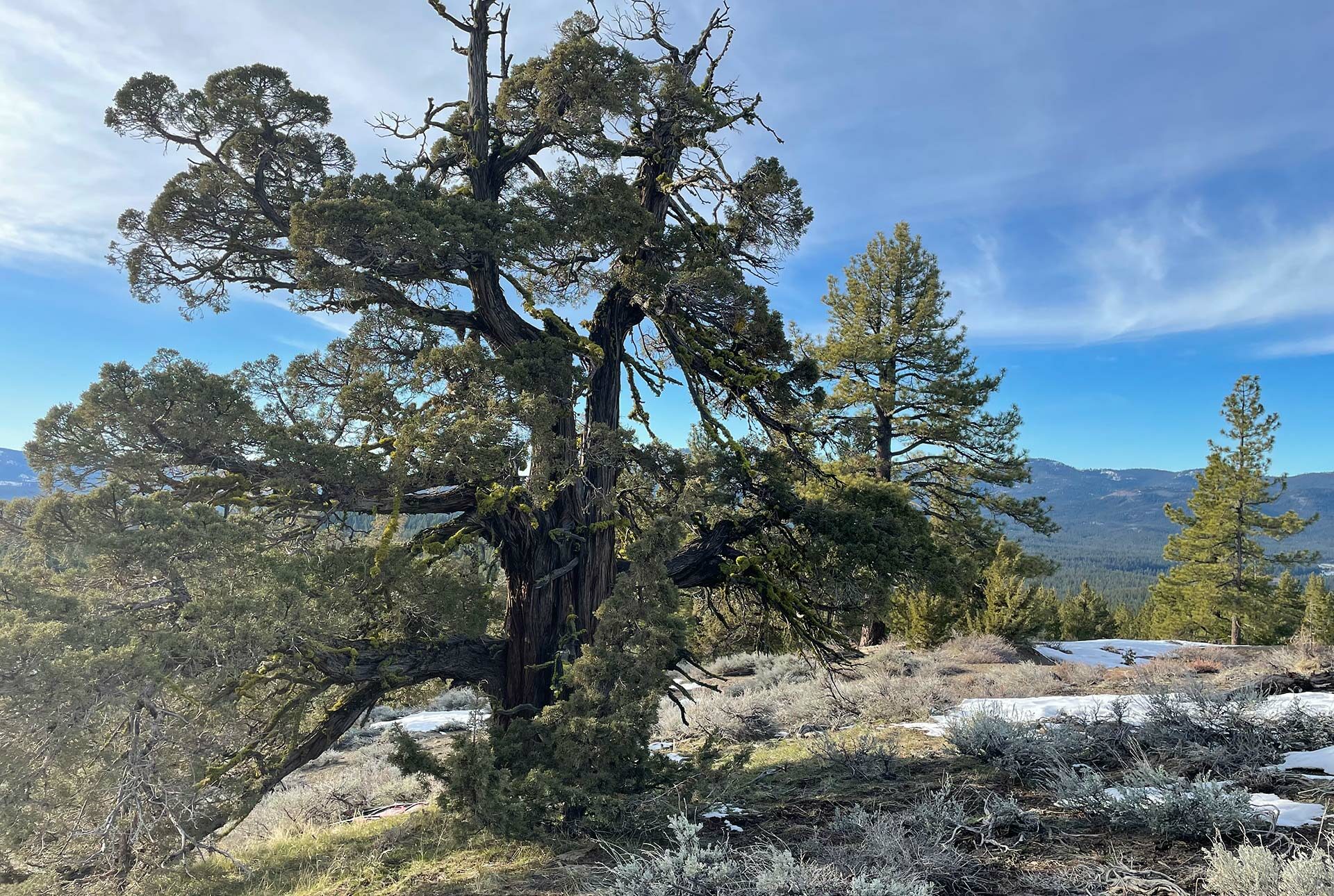
NAKOMA’S JUNIPER TREES
ancient sentinels of the Sierra
One very notable tree that elicits “oohs” and “aahs” from visitors to Nakoma is the Sierra Juniper.
While most people hardly notice it in the lower elevations of the Nakoma community where it mingles with other forest trees, the Sierra Juniper’s statuesque habit dominates the open ridge-top homesites like sculpted sentinels.
Here their massive, twisted trunks and bonzai-esque crowns create scenes that are reminiscent of Ansel Adams photos.
The Sierra Juniper (Juniperus grandis) is the largest and longest lived of all juniper species. The largest of the species, the Bennett Juniper, growing at 8,300 feet in the Stanislaus National Forest is 80 feet tall, has a trunk that is 13 feet in diameter and is suspected to be about 3,000 years old. Because Bennett’s interior is hollowed out, botanists have been unable to determine an exact age, but its nearby neighbor, the Scofield Juniper, was confirmed at 2,675 years old.
While it’s unlikely that any of Nakoma’s junipers are quite the same vintage, some of the more massive specimens growing in the harsh conditions and impoverished soils of Nakoma’s rocky ridges are likely to be extremely old.
This adds an interesting dimension to a Nakoma real estate purchase: As I’m fond of pointing out, the local nursery doesn’t keep thousand-year-old trees in stock, and there really are not all that many opportunities to buy Plumas County property with multi-century Sierra Junipers, nor are the trees easy to find when looking at Truckee or North Lake Tahoe real estate.
As such, getting your hands on a Nakoma homesite with these magnificent trees is almost like buying an Italian villa and finding a Da Vinci in the attic — a priceless add-on to what is already a beautiful home.
TREE CARE: JUNIPER TIPS
Unfortunately, like a lot of species specialized for life in extreme environments, junipers are actually somewhat sensitive to change. Property owners wishing to preserve their ancient junipers for future generations should avoid any disturbance of the soil around these trees in the construction of homes and driveways, and should take great caution not to change the hydrology or increase compaction of the soil in the vicinity of the tree.
Another note of caution regarding junipers; they are notoriously flammable. The wood, foliage and litter beneath the trees is highly resinous and burns very hot. Where risk of wildfire is a concern the litter beneath the tree should be kept to a minimum. Careful pruning to create a vertical separation of the canopy from ground fuels is also a good idea, although on some of these legacy specimens you might want to consult a competent arborist.
While your trimmings may be a pleasantly fragrant addition to an outdoor warming fire, you don’t want to burn any juniper in your wood stove or fireplace, as the partially burnt resins can accumulate on the walls of your flue and increase your chances of a chimney fire.
A safer way to enjoy the fragrance of junipers is by drinking it. There are several distilleries in Oregon that make use of native juniper berries in their gins. More locally, Truckee’s own Old Trestle Distillery makes a series of gins under the name Theory Gin, some of which make use of Sierra Juniper berries.
For more information about the Nakoma community and its flora and fauna contact Dan Gallagher at 530-927-8104 or email Sales@NakomaLife.com.
